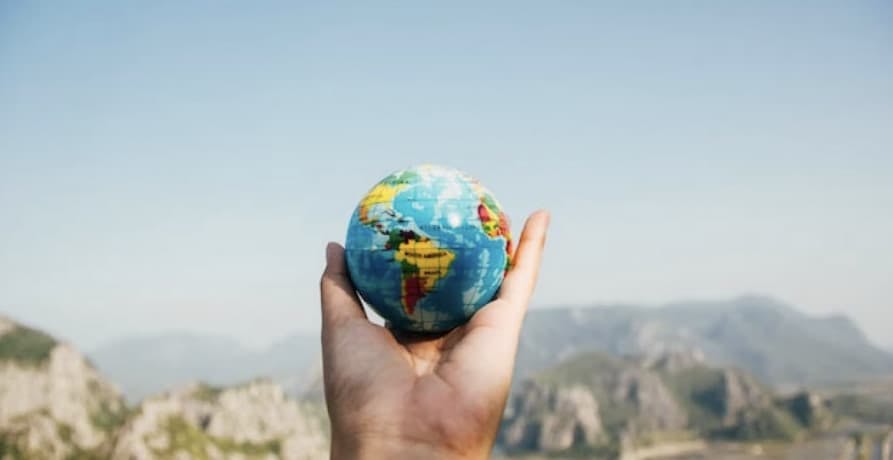
Impacts, Risks, and Opportunities (IRO) for CSRD Reporting
In this article, we’ll break down what IROs are, how to identify and assess them, and what CSRD requires in terms of disclosure.
ESG / CSR
Industries



As businesses and organizations around the world race against the clock to try and achieve net-zero emissions by 2050, many are seeking the best accreditation to prove their carbon neutrality efforts – and one of those could be the PAS 2060.
What is the PAS 2060, and why is it a respected certification for companies working towards carbon neutrality?
The PAS 2060 is a standard that was published by the British Standards Institution back in 2010, and was modified in 2014 – with a goal in mind to encourage various organizations to illustrate their efforts towards carbon neutrality and establish transparency between businesses and their customers to avoid allegations such as greenwashing.
The PAS 2060 helps to guide companies on how they can measure, reduce, and offset their carbon dioxide and greenhouse gas emissions – and is specific to their business sector. For example, the PAS 2060 offers insight on how to reduce emissions in relation to business activities, products, services, office buildings, various projects, and attending events that may result in a high rate of emissions. Any company can calculate their carbon footprint and purchase carbon credits or invest in carbon offsetting projects as an attempt to offset their own emissions to be able to say they have achieved carbon neutrality – but the PAS 2060 allows companies to do so efficiently, accurately, and provides the company with a certification to delineate their carbon reduction efforts to other potential partners and customers around the world.
As more and more companies strive to achieve net-zero emissions by 2050, acquiring a world-wide recognised certification like the PAS 2060 is more imperative and useful than ever before.

Carbon neutrality is when a company strives to reduce their emissions, as well as contribute to carbon offsetting projects – where as achieving net-zero emissions is when a company alters their business model to reduce their own individual production of carbon emissions to the lowest rate possible, while trying to not rely on carbon offsetting projects to accomplish this. A PAS 2060 can ultimately help a company achieve both carbon neutrality or work towards net-zero emissions.
There are a multitude of benefits to acquiring a PAS 2060. For starters, the PAS 2060 is the only existing certification to be internationally recognised for one’s efforts towards carbon neutrality. Also, the PAS 2060 serves as a guide for companies seeking to numerically define their carbon footprint whilst also encouraging them to decrease their emissions with methodical planning and a compulsory, annual review of their plan.
The PAS 2060 can help to promote carbon offsetting projects, as the PAS 2060 encourages the use of certified credits to financially contribute to any and all projects that mitigate climate change, or improve upon existing, negative social and environmental circumstances.
Ultimately, the PAS 2060 can persuade a company to reach their full potential in terms of fighting against climate change, as well as encouraging a company to commit to more volunteer programs to better both society and the environment. In short, the PAS 2060 can help to create a more sustainable and hospitable business environment – which will benefit the business itself in the long run, and open more doors for potential investors, customers, and employees to expand the company and its main mission.
However, why do so many companies see the value in being carbon neutral?
There are many benefits to your company being able to demonstrate their carbon neutrality efforts with a certification like the PAS 2060. Besides the fact that a PAS 2060 helps to show your company’s commitment to reducing carbon emissions and in addition, offset external emissions as an effort to contribute to the fight against climate change – becoming carbon neutral can help to improve your green credentials. Acquiring a certification, like an ISO 14001 or a PAS 2060, requires consistent review and improvement on a company’s current sustainability and emission reduction tactics. Therefore, the PAS 2060 can provide your company with the necessary, annual incentive that may be vital to keep the momentum towards reducing emissions going.

Investors, customers, and employees alike are becoming increasingly aware of the importance in associating with a company with strong environmental and social values. Acquiring a PAS 2060 can allow your company to represent itself as a reputable, environmentally friendly business.
Other benefits of achieving carbon neutrality include contributing to the climate change crisis at hand, supporting various environmental projects, and aligning your business to the UNGC’s sustainable development goals. In short, striving for carbon neutrality can create opportunities for your company to receive accreditations like a PAS 2060, ISO 14001, or qualify to join the UN Global Compacts’, “Agenda 2030”.
The first step according to the PAS 2060 is to measure the carbon footprint of the product or service created and executed by the company, and to do so using the globally recognised methods provided by the PAS 2060.
The PAS 2060 recommends that organizations use the carbon calculation methods provided by an ISO 14064-1 or a Greenhouse Gas Corporate Protocol. The PAS 2060 also delineates that the calculated carbon footprint should include all of scope 1 and scope 2 emissions, as well as any scope 3 emissions that add up to more than one percent of the company’s total carbon footprint in order to find the best method to reduce the company’s overall emissions.
Emissions are divided into categories called “scopes”. Scope 1 emissions are any emissions that come directly from the company itself, such as industrialization production or use of in-house vehicles. Scope 2 emissions come from energy that is consumed or emitted by the company, such as from rented or leased office spaces or the electricity necessary to run heavy equipment like central heating or air conditioning. Scope 3 emissions are all other miscellaneous emissions that come from activities done outside of the company, but still by the company's choice: such as business travel, transportation, or the use of raw materials.
Only after the company has precisely measured their emissions, can they create a personalised plan to reduce them.
The second step delineated in the plan to achieve carbon neutrality by PAS 2060 is to reduce emissions. All companies should establish a “Carbon Footprint Management Plan” suited to their society in order to cultivate a communal dedication to carbon neutrality. The main strategies used for reduction according to the PAS 2060 include the use of a time-scale, creating specific targets for emissions reductions with deadlines included, and how the company can offset external emissions.
If this plan is implemented into a company’s business plan well, it should lead to efficacious results in emissions reductions.
The PAS 2060 entails that all residual emissions should be offset by carbon credits that are high quality and certified. The standards set for carbon credits as stated by the PAS 2060 include that the carbon credits are an approved activity by the PAS 2060, that the financial contribution would aid the project in a manner that would have been impossible without the purchase of the carbon credit, that the carbon credits are verified by a third party, and that the credits are removed from public records annually.
These offsetting activities must be done by the company in order to achieve carbon neutrality. It is crucial to remember that offsetting activities and the purchasing of carbon credits are not viable methods to obtain a PAS 2060 certification alone. All companies must strive to reduce their own emissions in addition to contributing to the offsetting of external emissions, such as carbon offsetting projects or carbon credits.
The last step in the PAS 2060 to achieve carbon neutrality is to document and verify the previous steps listed above. In order to verify the previous steps in the PAS 2060, a declaration of statements otherwise known as “Qualifying Explanatory Statements'', or QES – must be made. Public disclosure is compulsory in order to establish transparency, and must be included in this statement.

If a company seeking to be accredited by the PAS 2060 is lacking in experience, they should be vilignet to double check their footprint – as miscalculations could cause more mishaps down the line across multi various sectors. This is why ensuring that all previous carbon credit purchases and Qualifying Explanatory Statements are reviewed by a third party is imperative, so that the company’s future carbon neutrality status can be fairly promoted and prevent allegations like greenwashing.
Once all of these steps are completed, a company can then qualify to be PAS 2060 certified and promote their carbon neutral label.
If you and your company are seeking to become carbon neutral, the PAS 2060 is the best way to go – as it provides an internationally recognised guideline on how to reduce emissions and provides the incentive many companies lack to fight against climate change.
But how can you strive towards carbon neutrality in your day-to-day life?
Small things can really add up: like trying meat-less mondays or opting for plant-based means whenever possible, improving the energy efficiency in your own home with new household appliances, traveling sustainably whenever possible by avoiding the use of gasoline-powered cars and choosing public transportation such as the metro instead, and by spreading the word – sustainability doesn’t have to be hard, and it can make a difference in the future of our planet.
The PAS 2060 is valuable, but it’s important to not discard the worth of our daily actions and how they can be altered to reduce our global carbon footprint.
Given the PAS 2060 is the only internally recognised accreditation for carbon neutrality, the PAS 2060 is ultimately a certification worth achieving – as it can help encourage your company to strive towards imperative environmental incentives such as carbon neutrality or net-zero emissions, while also improving your businesses potential financial and partnership opportunities.
We all need to find the motivation to reduce our carbon footprint and fight against climate change, and if your company is looking for a guide on how to get started – a PAS 2060 may be the right choice.
If reading this article the PAS 2060 standard for carbon neutrality has made you interested in reducing your carbon emissions to further fight against climate change – Greenly can help you!
Greenly can help you make an environmental change for the better, starting with a carbon footprint assessment to know how much carbon emissions your company produces.
Click here to learn more about Greenly and how we can help you reduce your carbon footprint.
Don't wait any longer, take the first step towards reducing your carbon footprint by requesting a free and non-binding demo with one of our experts today and finding the solution that best fits your business needs.